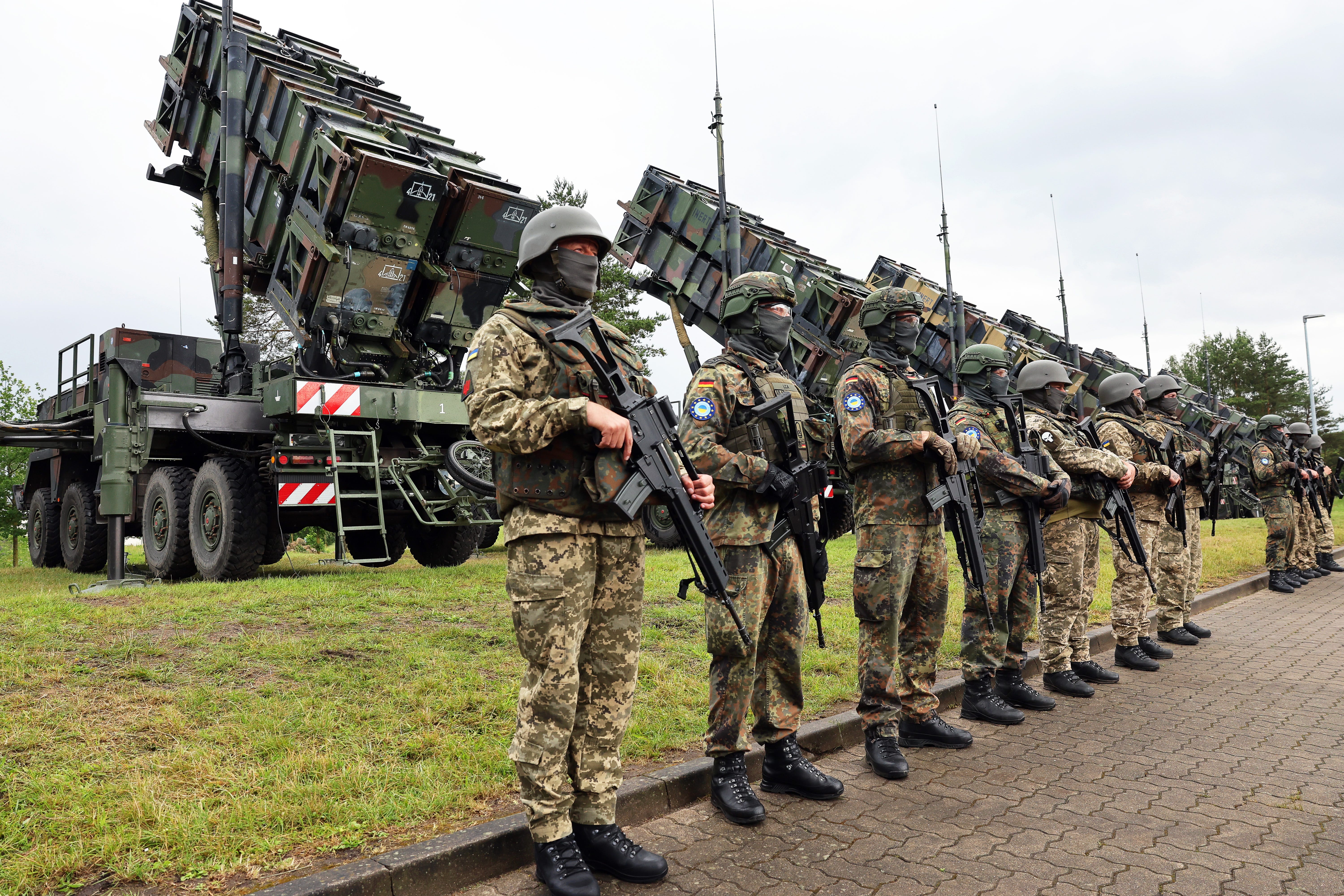
Jens Büttner/Pool/Getty Images
NATO plans to invest money from soaring alliance defense spending into a fivefold increase in air defenses, but revitalizing capabilities ignored since the end of the Cold War is easier said than done.
NATO sorely needs air defenses. Secretary General Mark Rutte said Europe does “not have enough,” outlining “clear gaps” in command and control, long-range weapons, and sensor systems, all while Russia’s military growth is “really threatening.”
The way Russia is fighting in Ukraine and the reconstitution of its military have led to greater urgency in NATO.
Defense experts say higher spending is warranted, especially on ground-based air defenses, but the alliance can’t expect a quick fix from money alone.
The West needs air defenses and big missile stocks
Russia’s invasion, specifically its relentless attacks on Ukrainian cities, shows air defenses are needed in a major conflict. For the West, worried about Russia and China, it’s a wake-up call.
The West scaled back air defenses in recent decades as it battled weaker adversaries that posed no major air threat. However, Russia’s bombardments, sometimes using hundreds of missiles and drones, show the West must be ready for the same. It’s not yet.
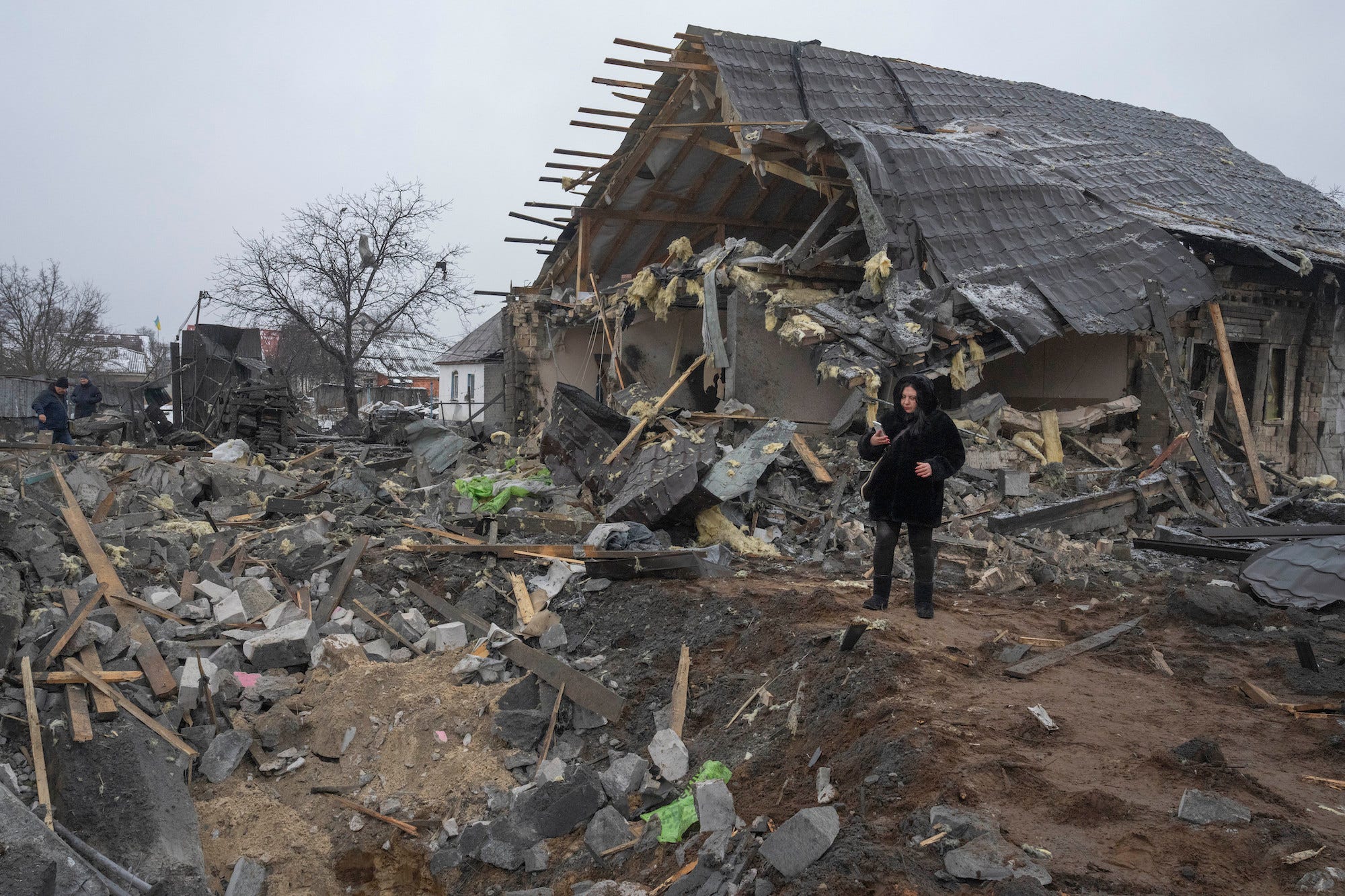
AP Photo/Efrem Lukatsky
“NATO faces a significant shortfall in ground-based air defense systems,” both with the number of systems and ammunition supplies for them, Justin Bronk, an airpower expert at the Royal United Services Institute, said.
NATO is acting, but investments don’t mean weaponry can actually be made quickly.
Bronk said fixing the issue “is much more a question of building production capacity at every stage in the supply chain as rapidly as possible as part of a crisis response rather than just spending more money.”
“Currently, there just isn’t enough production capacity in the world of Patriot interceptors, SAMP/T interceptors,” he said, referring to surface-to-air missiles for eliminating air threats.
Struggling with production woes not easily fixed
Following the Cold War, the West’s defense manufacturing and industrial prowess atrophied.
Companies consolidated, specialized production lines closed, workforces shrank, and inventories decreased — all crippling the ability to surge weapons.
Work is underway to boost production. For instance, Lockheed Martin expanded PAC-3 interceptor production for the Patriot system to 500 missiles in 2024, then a new production high, with plans to grow production further. Boeing upped seeker production, and Raytheon is boosting PAC-2 interceptor output, though it grapples with massive backlogs.
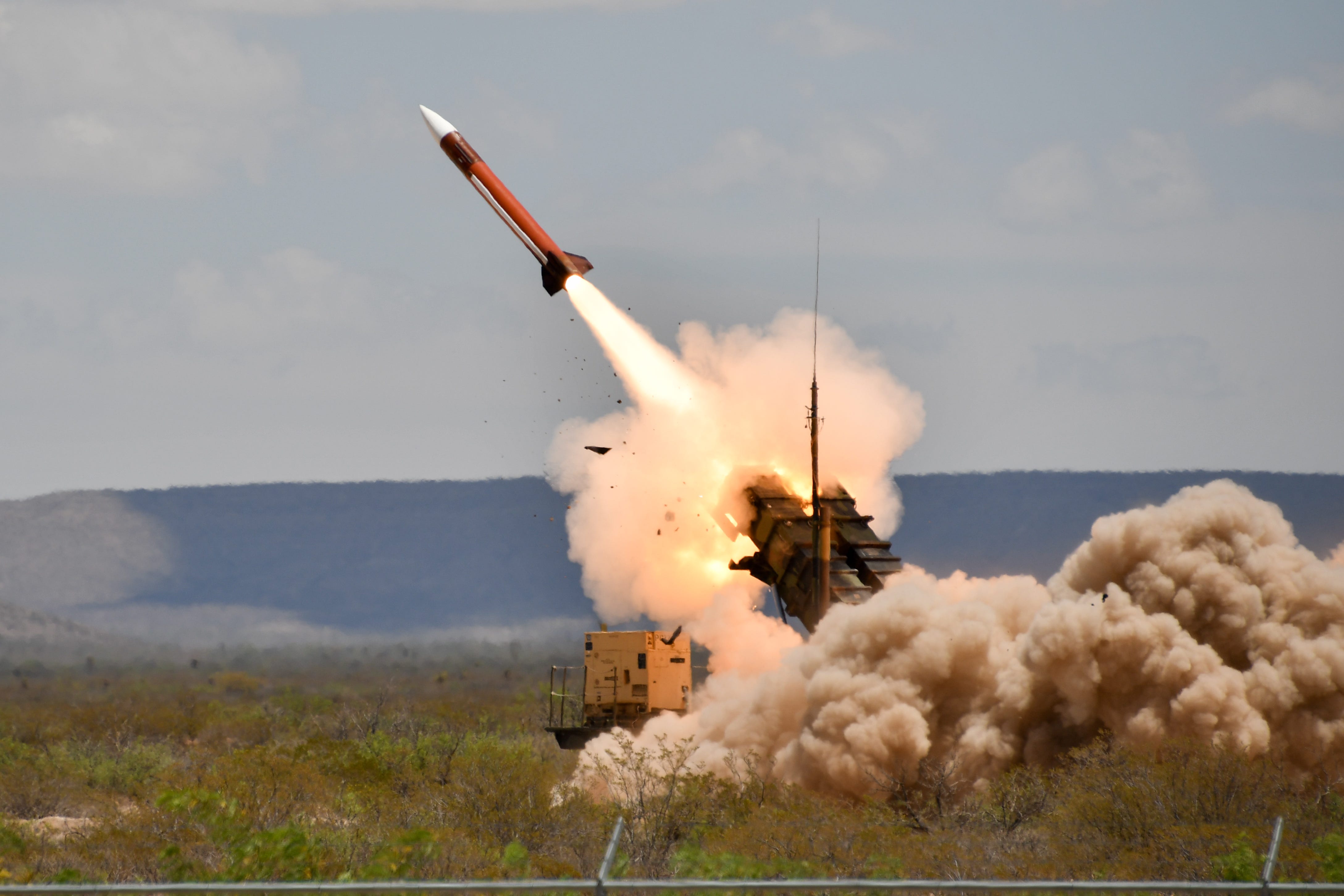
US Army photo by Sgt. David Rincon
Rheinmetall and Lockheed Martin plan to establish a European missile production hub, including the PAC-3 used by Patriots.
Rheinmetall CEO Armin Papperger told German newspaper Hartpunkt that Europe has struggled getting missiles from the US because of production shortfalls there. He said the wait could sometimes be 10 years, describing that as far too long.
It won’t start full missile production until 2027, and Papperger said he expects its engine producing capacity will be quickly used up.
For the Patriots, demand pretty consistently outpaces supply. And clearing backlogs isn’t quick.
European defense company MBDA, which makes ASTER air defense missiles and other products, saw orders double since Russia’s invasion. In April, Fortune reported that its backlog was projected to take up to seven years at current capacity.
The Financial Times reported the company’s plans to double the number of hours worked and hire more, but CEO Éric Béranger also wants more action. He called this a “moment of truth” for Europe and said: “We need to be much more industrial.”
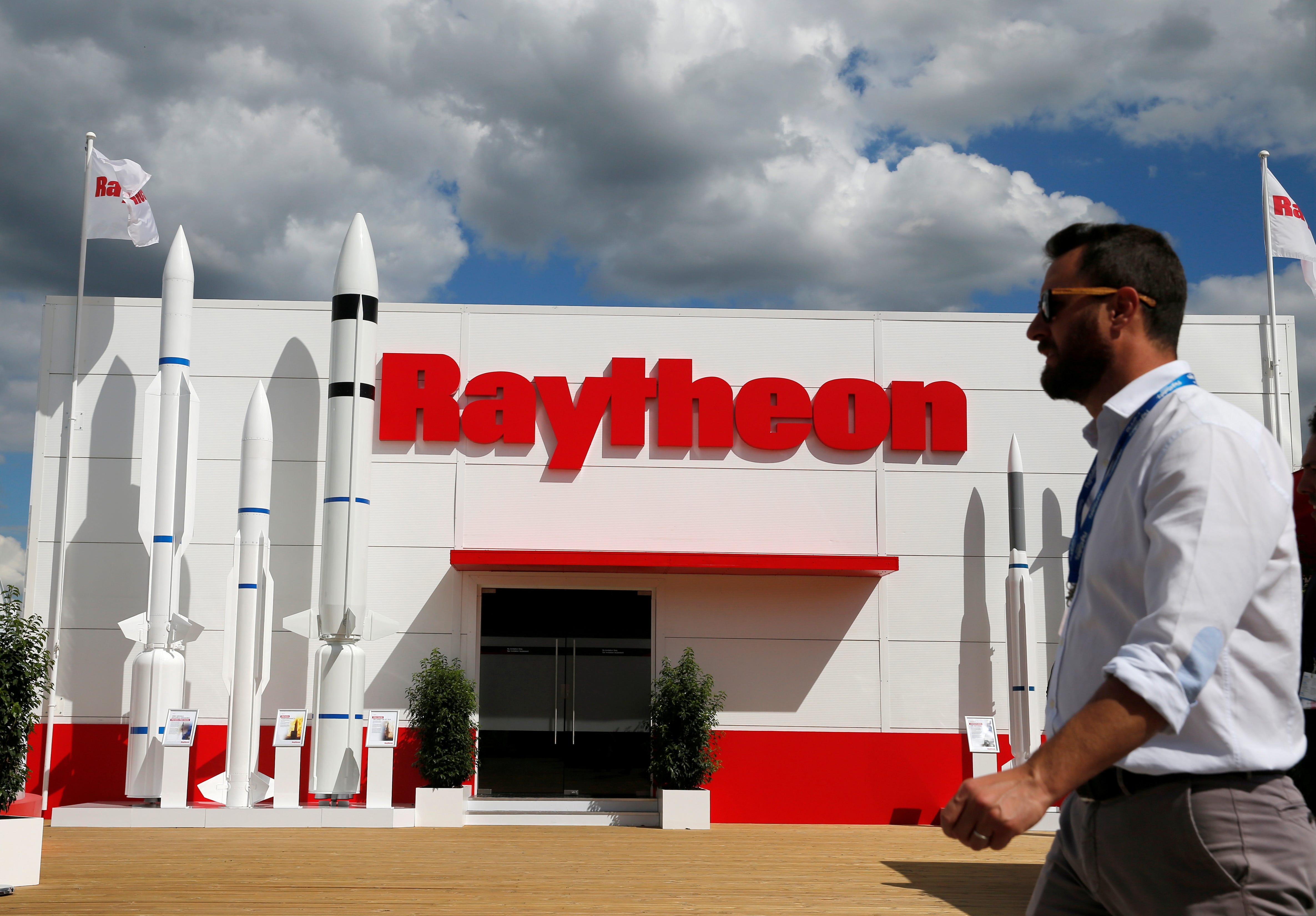
Reuters
Decreased production capacity has been “a tremendous problem in the United States,” said Mark Cancian, a senior advisor at the Center for Strategic and International Studies. “You can sign all the contracts you want, but the production capability is lacking.”
It takes time to make top-of-the-line interceptors
Even if more companies boost production, manufacturing sophisticated weaponry simply is not quick.
Thomas Laliberty, Raytheon’s president of land and air defense systems, told Politico last year that it takes 12 months to build a Patriot radar, just one part of an operational battery.
Sophistication is a key issue.
Bronk said missiles designed to attack are easier to build: “It’s much, much cheaper to build offensive missiles than it is to build defensive interceptor coverage.”
The price reflects that sophistication: Naval interceptors, like the SM-series, can cost up to almost $30 million a missile.
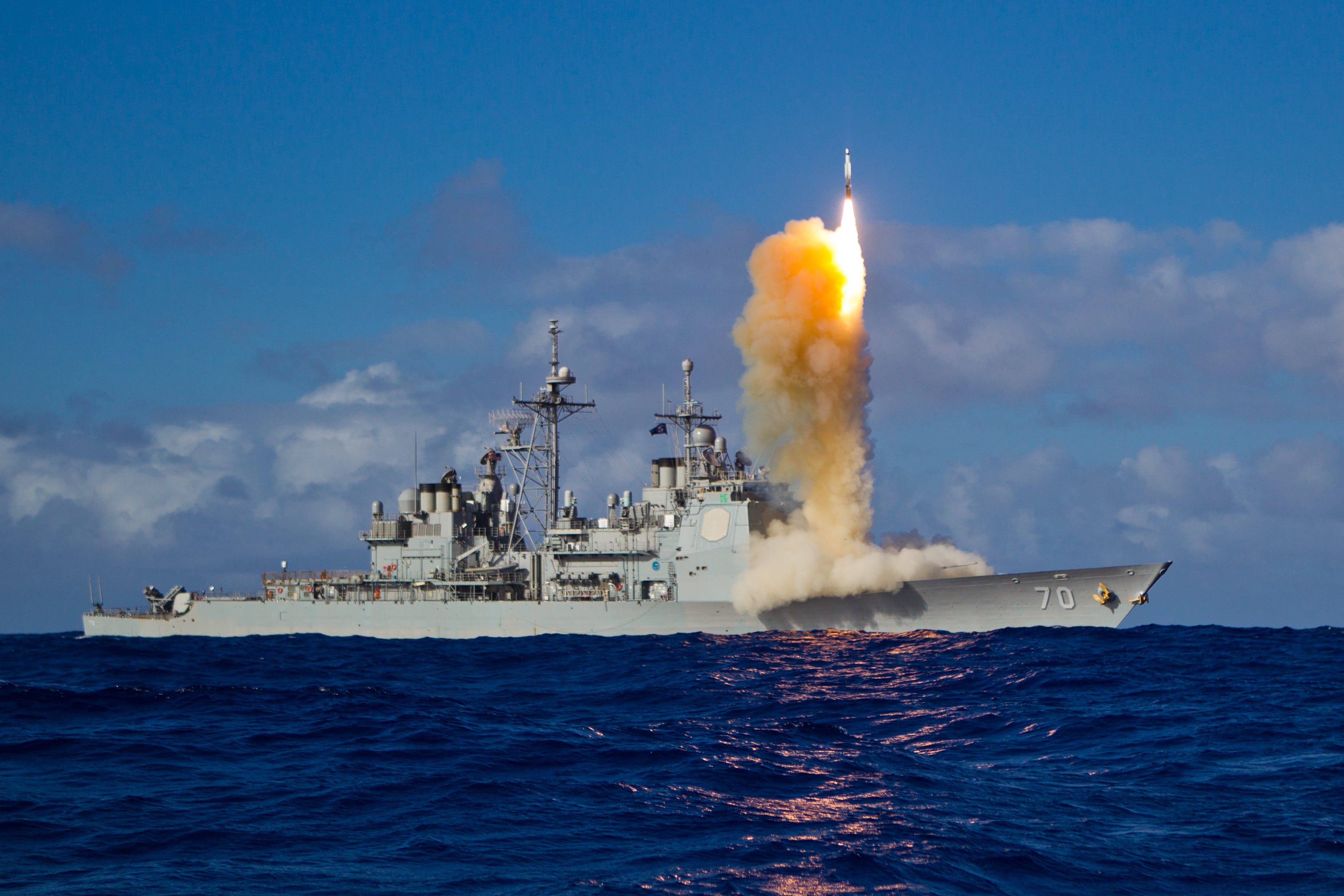
US Navy photo
Defense systems are “some of the most sophisticated bits of hardware that militaries have, and producing them takes time with pretty skilled labor,” former Australian Army Maj. Gen. Mick Ryan, a warfare strategist, explained.
Increasing production enough “will be a challenge,” he said.
There are steps forward, but challenges remain
The alliance is taking steps in the right direction.
Retired Air Commodore Andrew Curtis, an airfare expert with a 35-year career in the Royal Air Force, said countries speaking confidently gives the industry the reassurance it wants to invest.
“Governments are now talking the right language,” he said.
The industry saw investing in production facilities during the Cold War as “a sound business,” as demand was there. But that changed.
He said the industry would not invest long-term in expensive facilities that require skilled workers “with no guaranteed orders at the end of it.”
Increased cooperation is also needed.
NATO has cultural problems, with countries working separately. Jan Kallberg, a security expert at the Center for European Policy Analysis, said “the major challenge in NATO is not money, it’s coordination.”
Multiple companies working on similar systems means doubling up on some expenses, and makes scaling up harder, Kallberg said. Fixing that “would free up a tremendous lot of resources.”
Military officials want greater collaboration. A US general last month urged defense firms to coordinate more and “stop selling us pieces of the puzzle.”
Progress is happening: More companies and countries are working together. The Nordic countries are integrating their air defenses to act as one, and with joint air defense planning.
Changes are taking place at the top level. The European Commission is proposing new measures to cut red tape, encourage joint purchases, and facilitate billions of investments.
But challenges remain. Kallberg warned: “Culture takes far more time to change than just buying hardware.”
The post NATO is pouring new spending into much-needed air defenses. Money alone won’t fix the West’s problems. appeared first on Business Insider.




